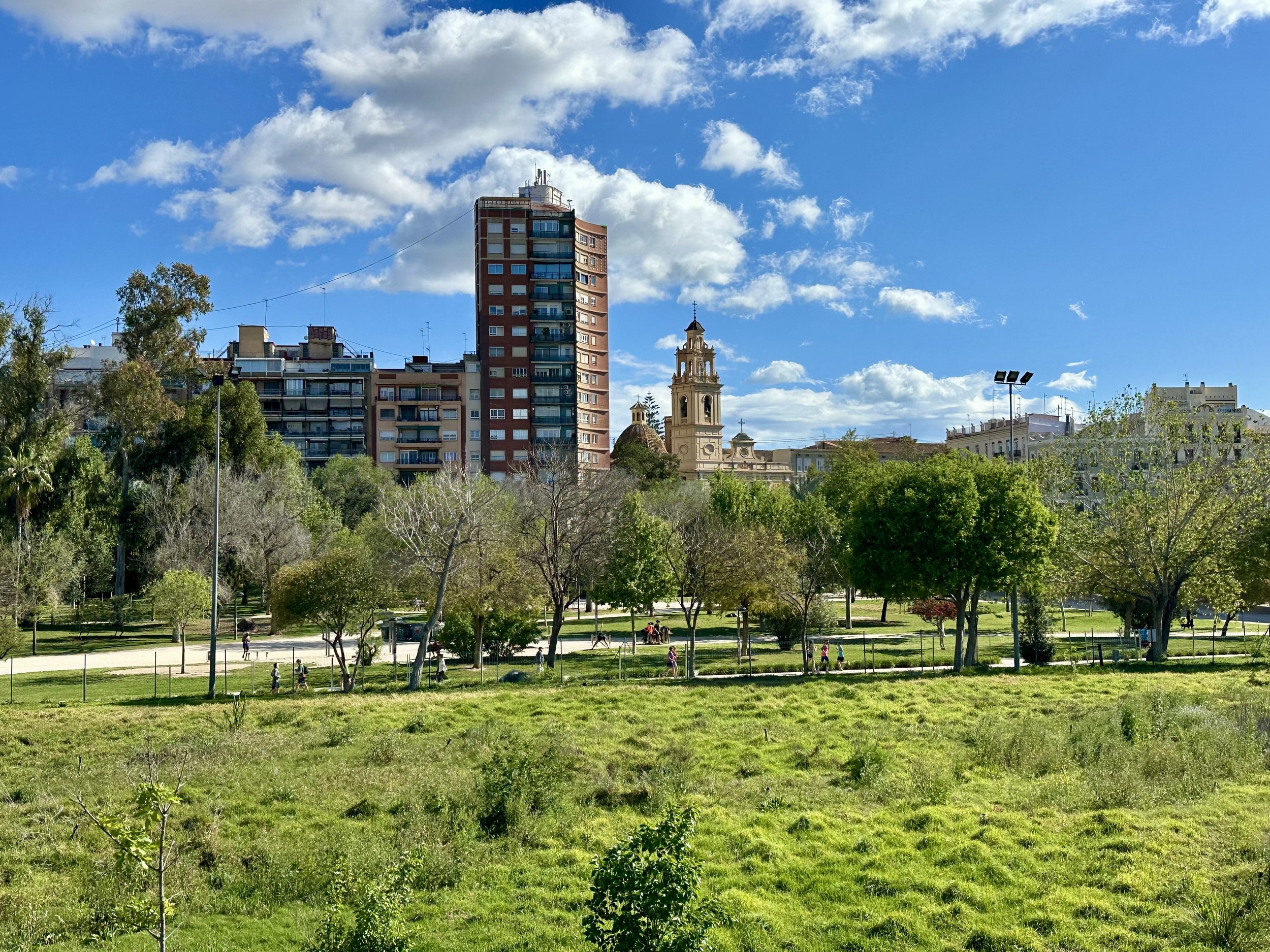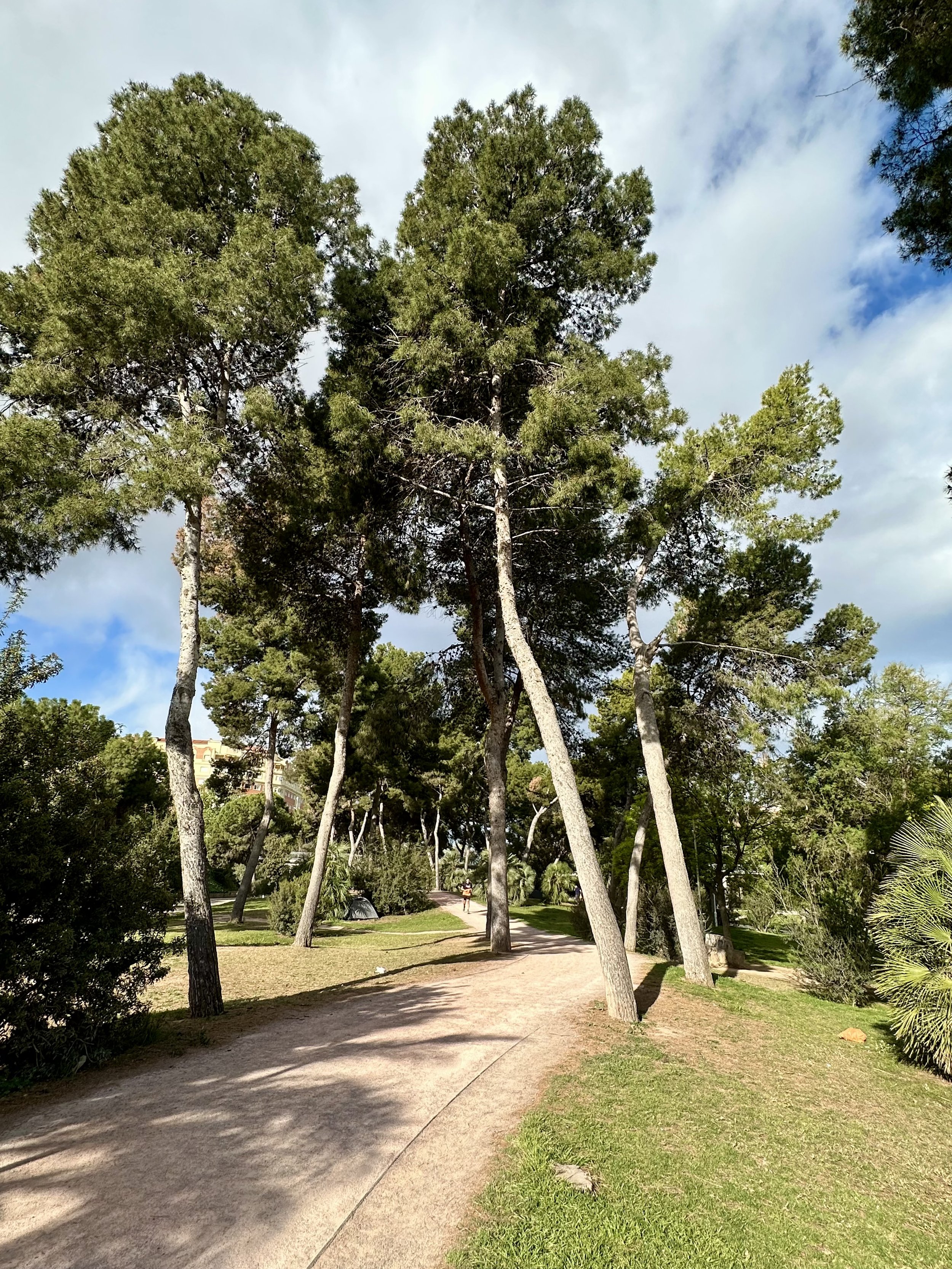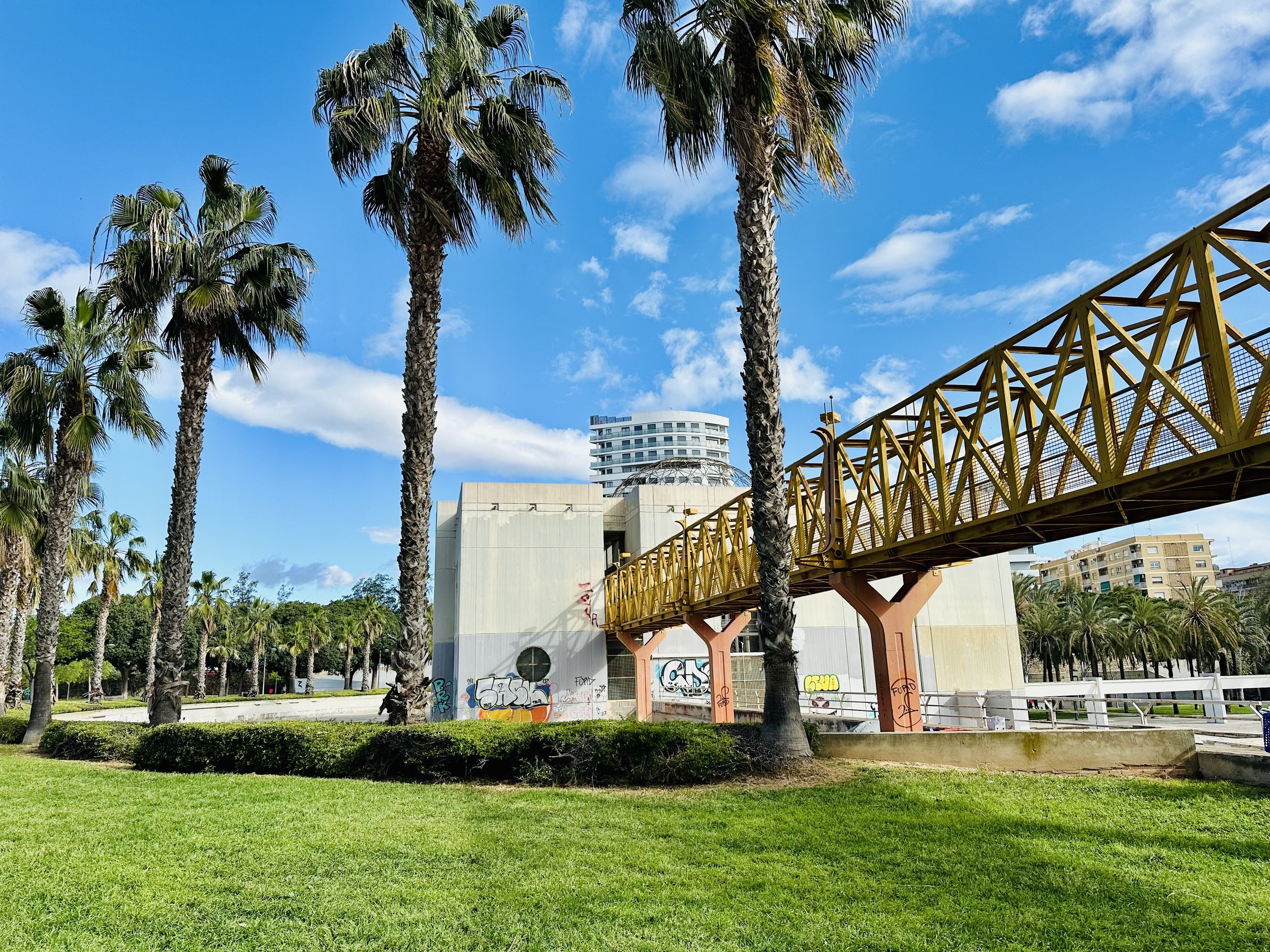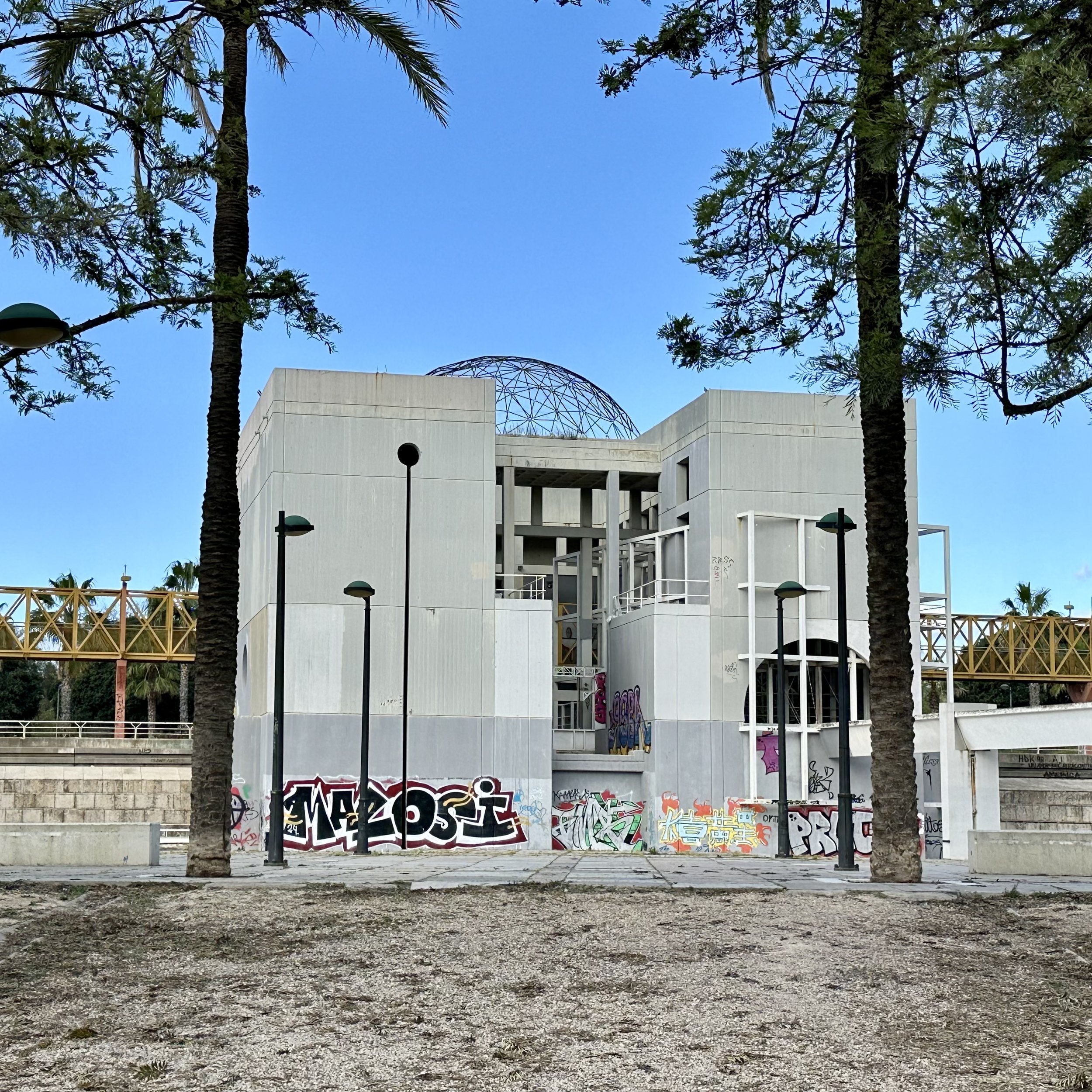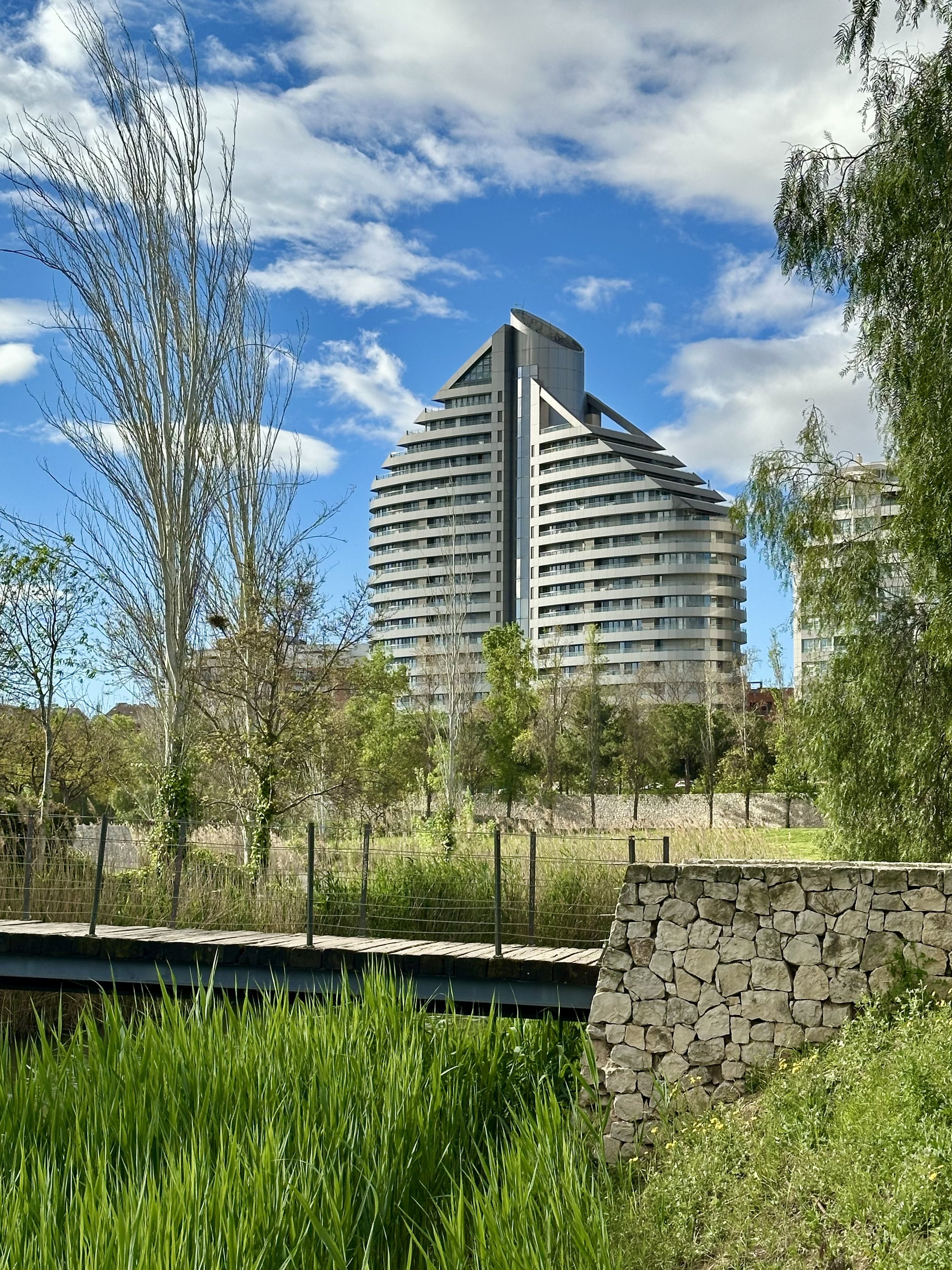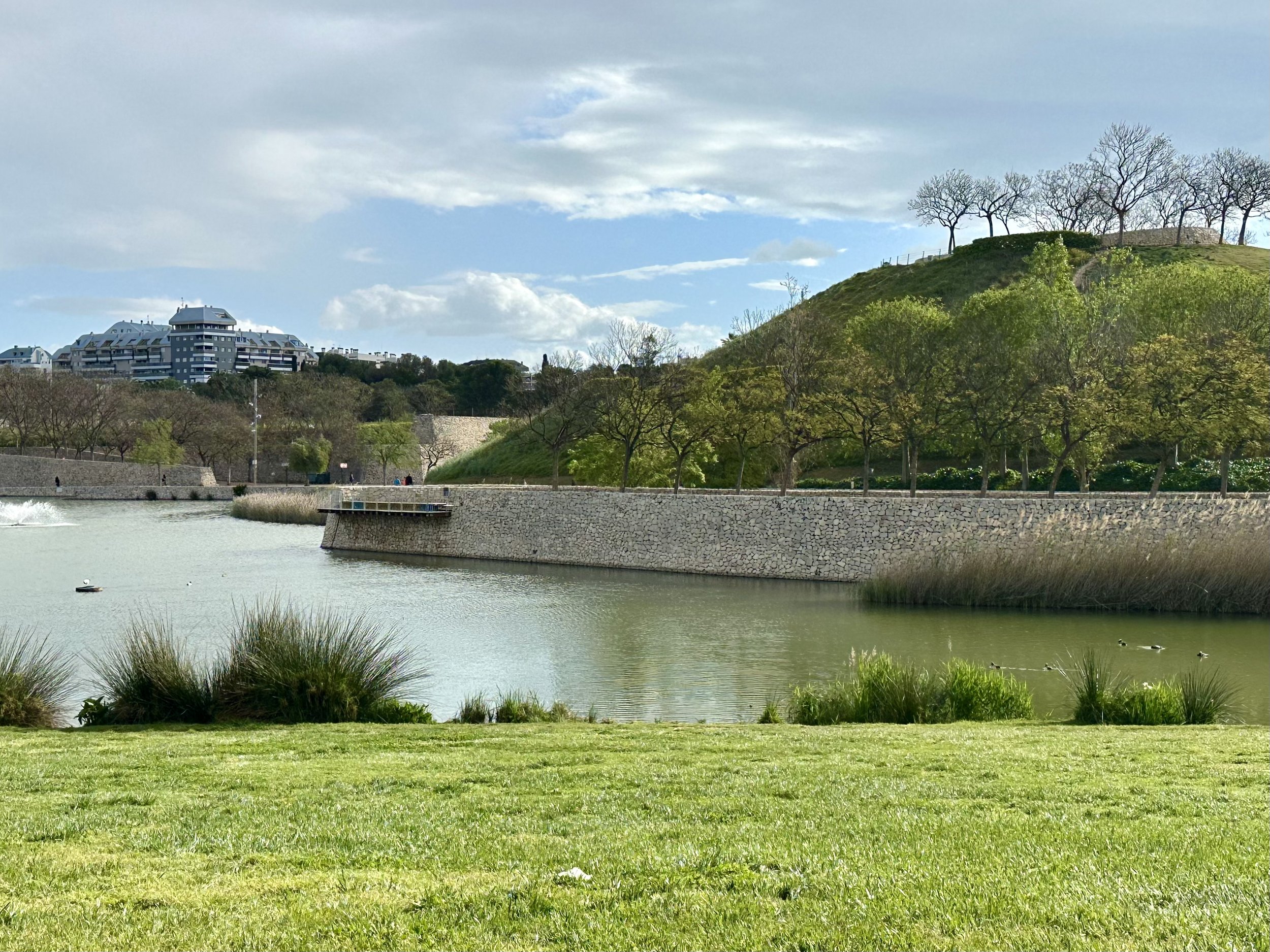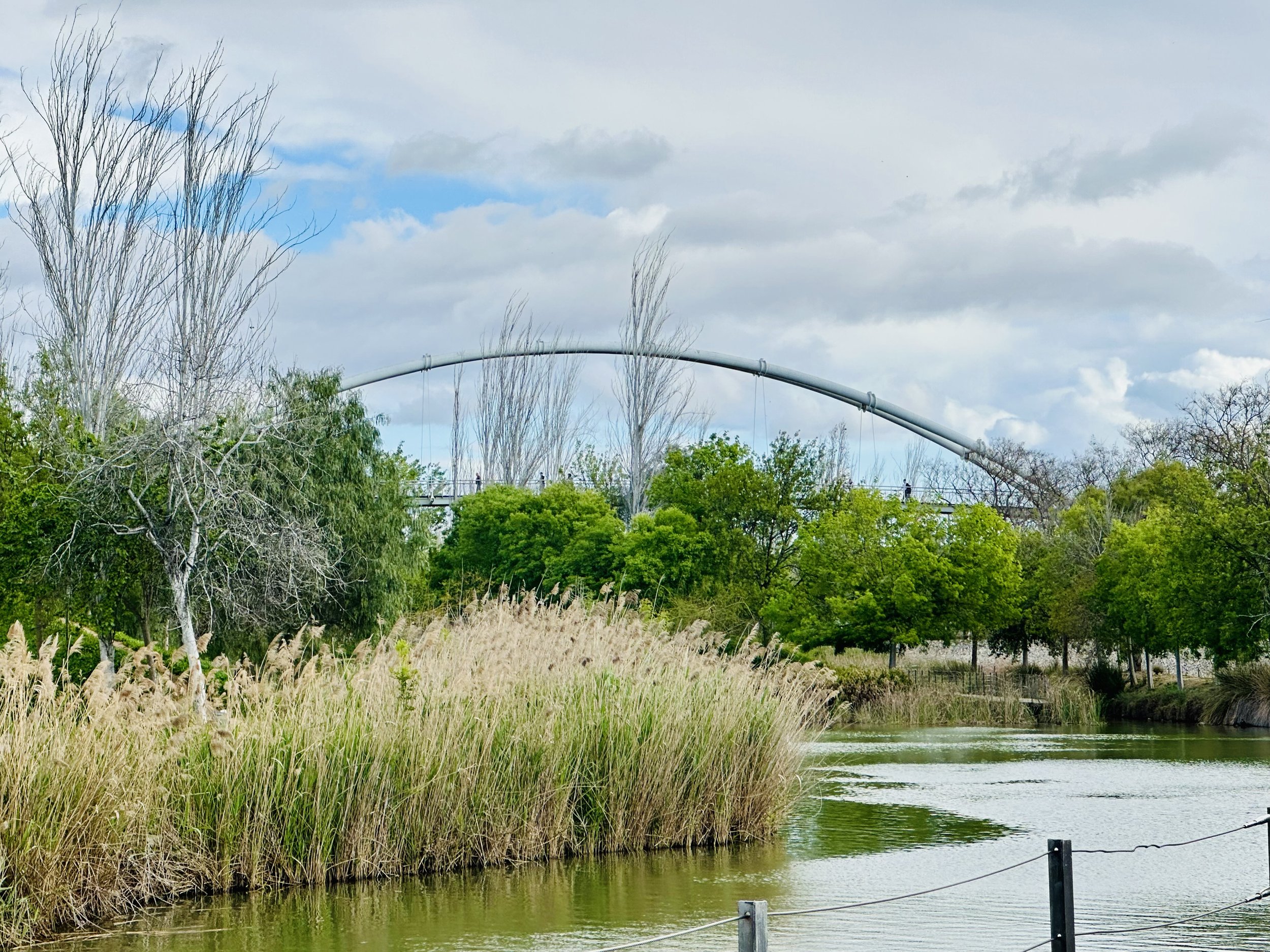Turia Garden
I’ve written about Jardí del Turia (Turia Garden) before, but since we took so many walks here, and since (as our Valencian tour guide proudly stated) it’s the lungs of the city, it merits its own post.
Turia Garden is the fortuitous outcome of a natural disaster. After most of Valencia was destroyed by a terrible flood in 1957, officials decided to re-route the Turia River to flow around instead of through the center of the city. A highway project was proposed for the old riverbed, but residents pushed back and demanded a park. Now, everyone can enjoy this huge urban green space, and it’s the most visited park in the country. It’s more than five miles long and curves through the city, so a huge percentage of Valencia’s residents live near the park. The red pin marks the location of our apartment. Lucky us!


I loved living just two minutes from Turia Garden. We would walk a block or so to the Serranos Towers, cross the street, and go down one of the ramps. Here’s the park, as seen from atop the towers:
The park was very wide - 400 feet across on average - and there were multiple paths, including bicycle lanes near the “banks” and a running trail in the center. Eighteen bridges crossed the park, reminders that it was once a riverbed. A wide variety of trees and plants provided shade and scenery. For me, it was a great place for people-watching: runners of all ages, commuters on skateboards, bicycle tours, family picnics, study groups, and soccer games.
EAST: Walking eastward in Turia Garden, we passed by groves of bottle trees and orange trees, the Palau de la Música (Music Palace), and wonderful Gulliver Park, where kids play like real-life Lilliputians. We walked under many bridges, some ancient, some modern. At the eastern end of the park was the Ciutat de les Arts i les Ciències (City of Arts and Sciences). You can read about our walk to the CAC here.
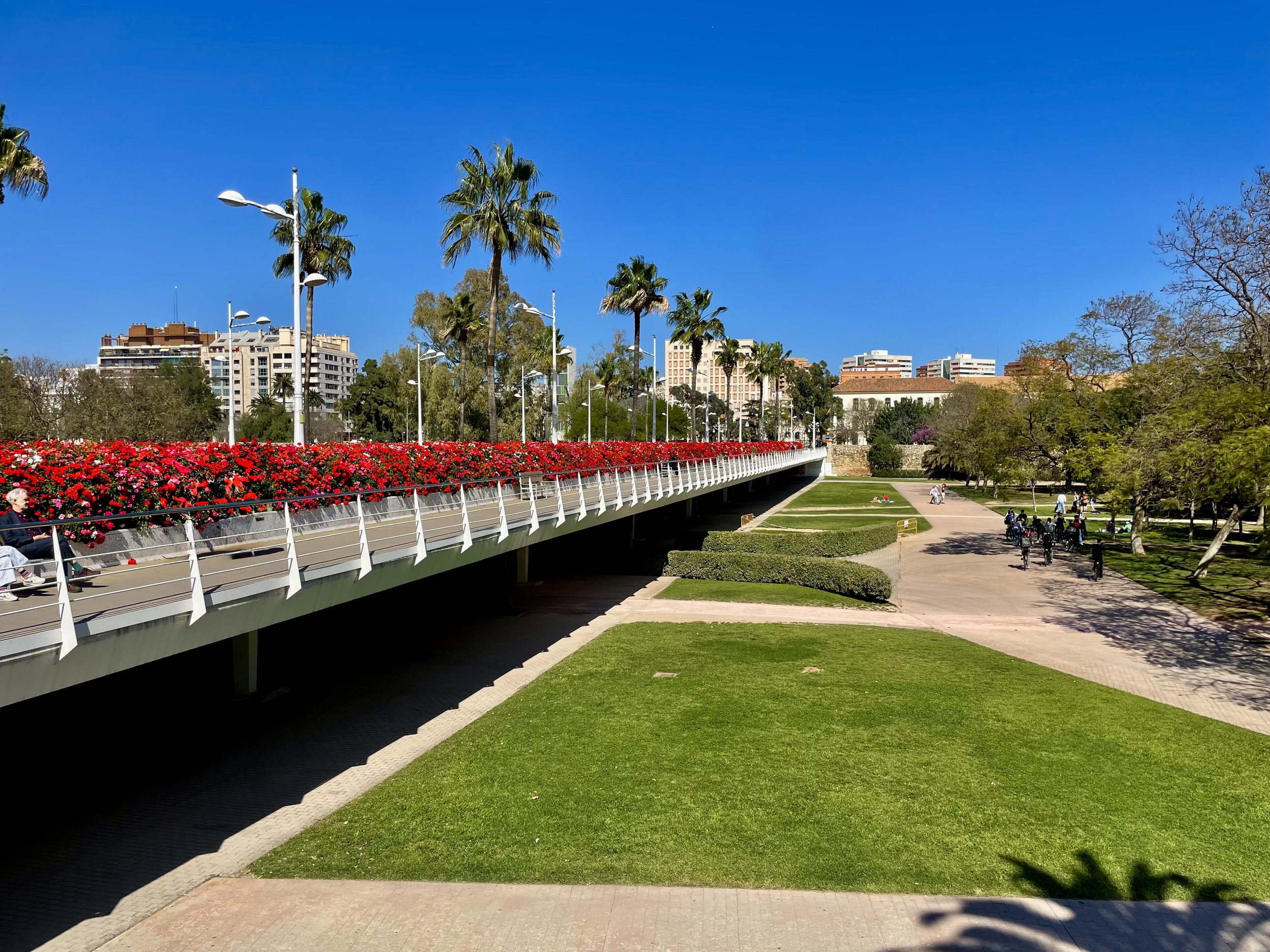
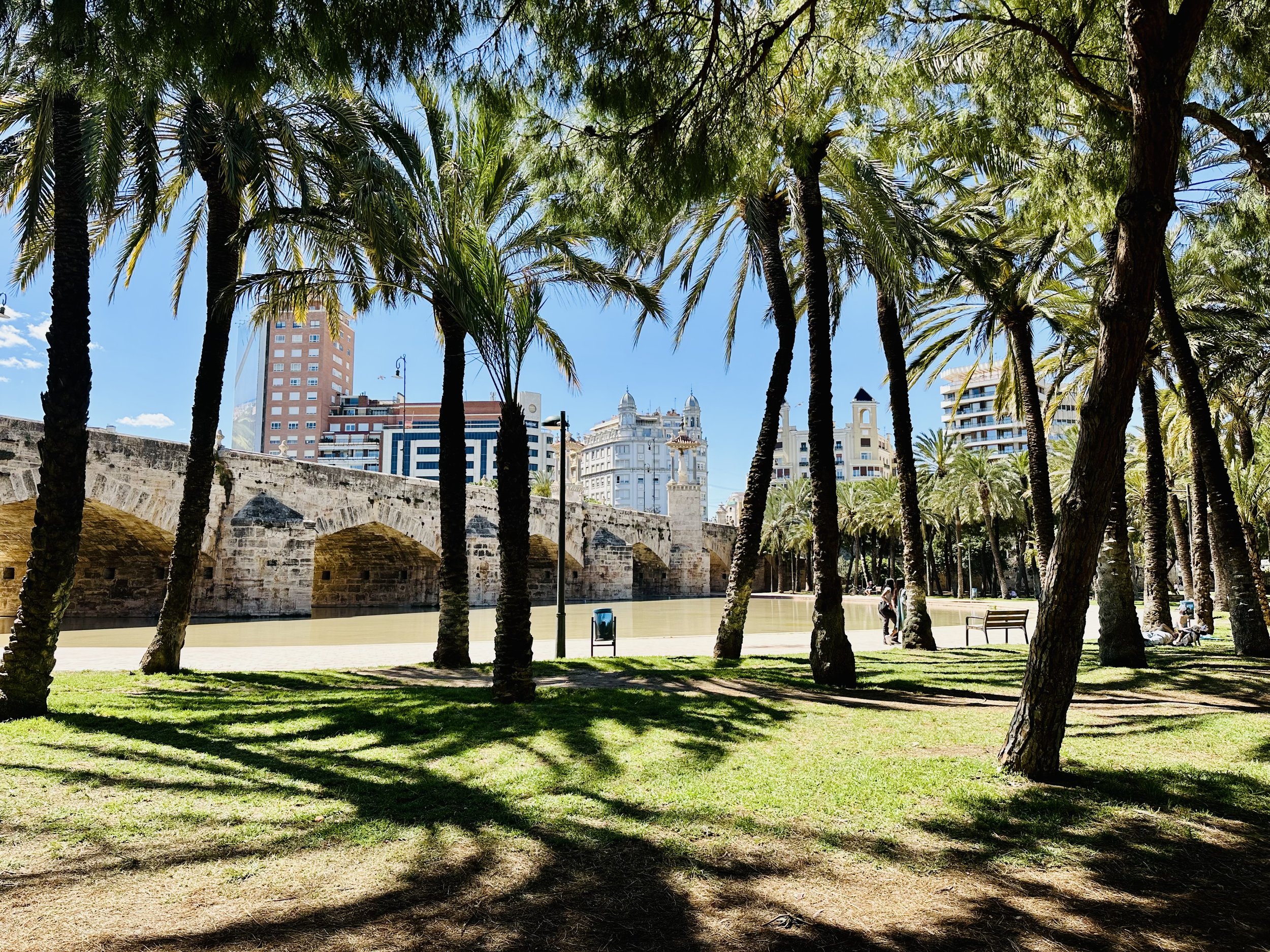

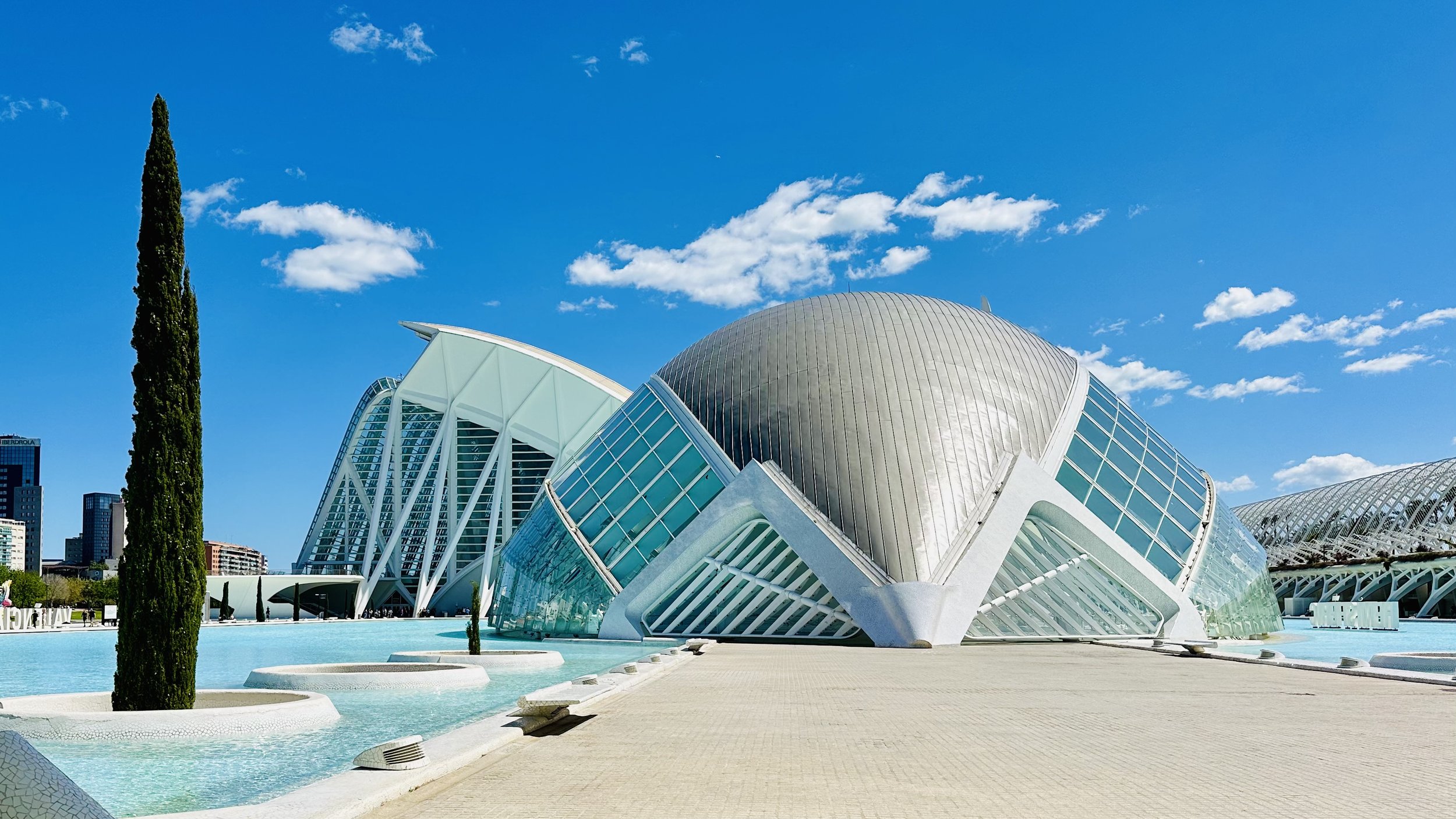
NORTH: At the center, stretching north from the riverbed, was a park called the Jardines del Real (Royal Gardens). The Royal Gardens were originally created for an 11th century palace that no longer exists, except for a few stone ruins. I was impressed with the park’s many “royal” features: fountains, manicured hedges, a large rose garden, and groves of ornamental trees. My favorite was an aviary with at least a dozen peacocks. We watched them for a while, and though they were quite vocal, the males did not spread their tail feathers, and the females seemed unimpressed.

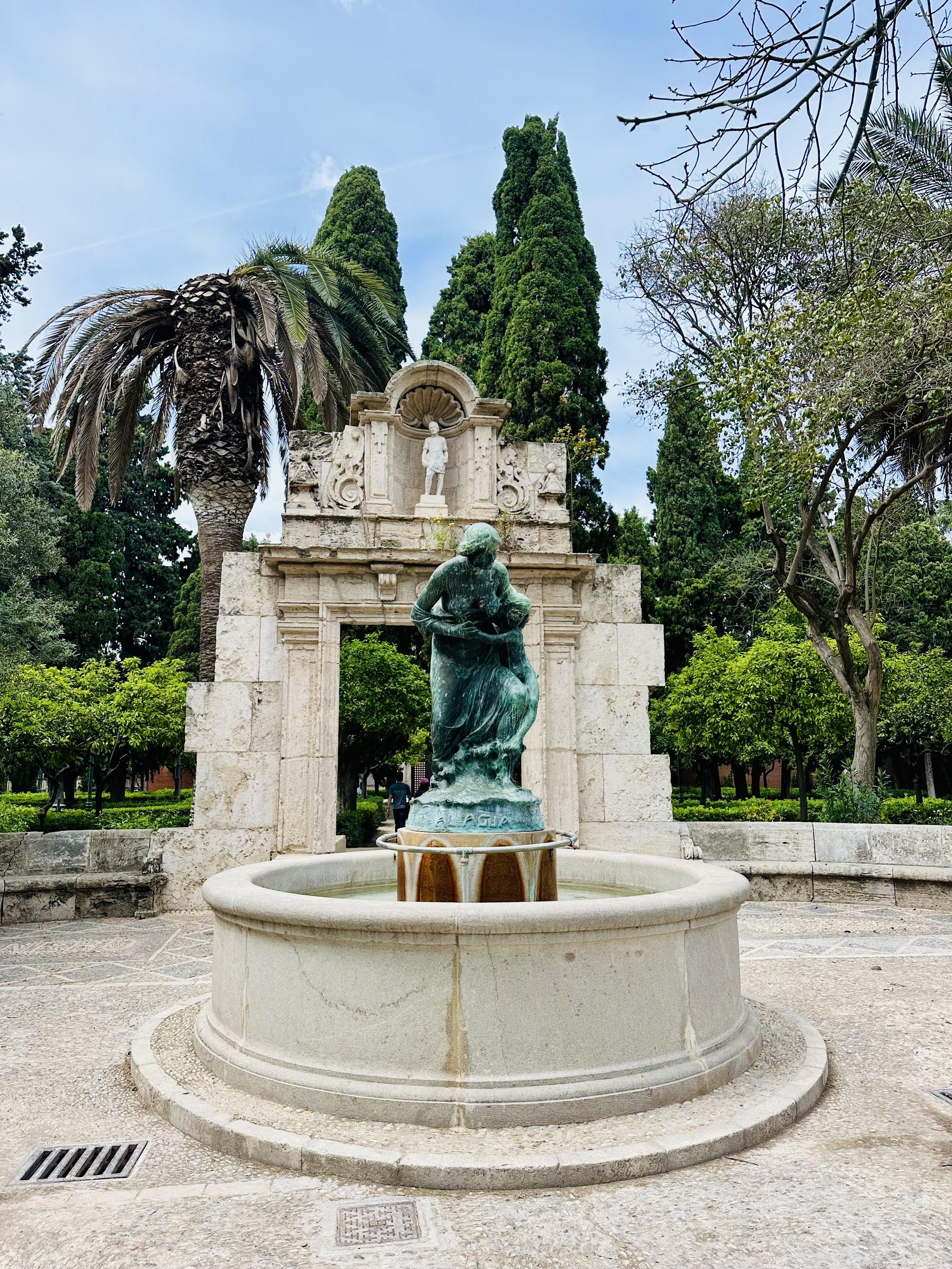
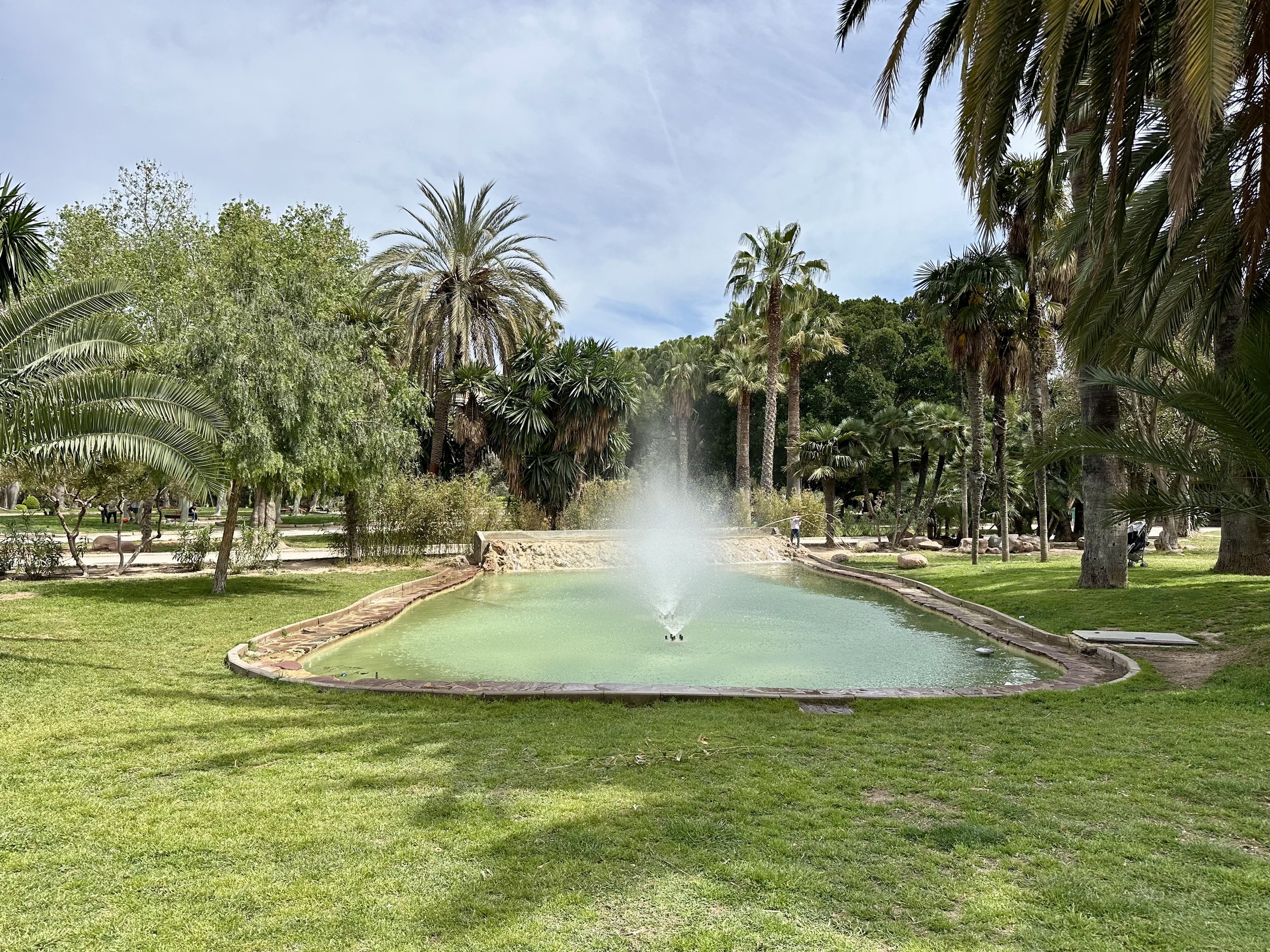

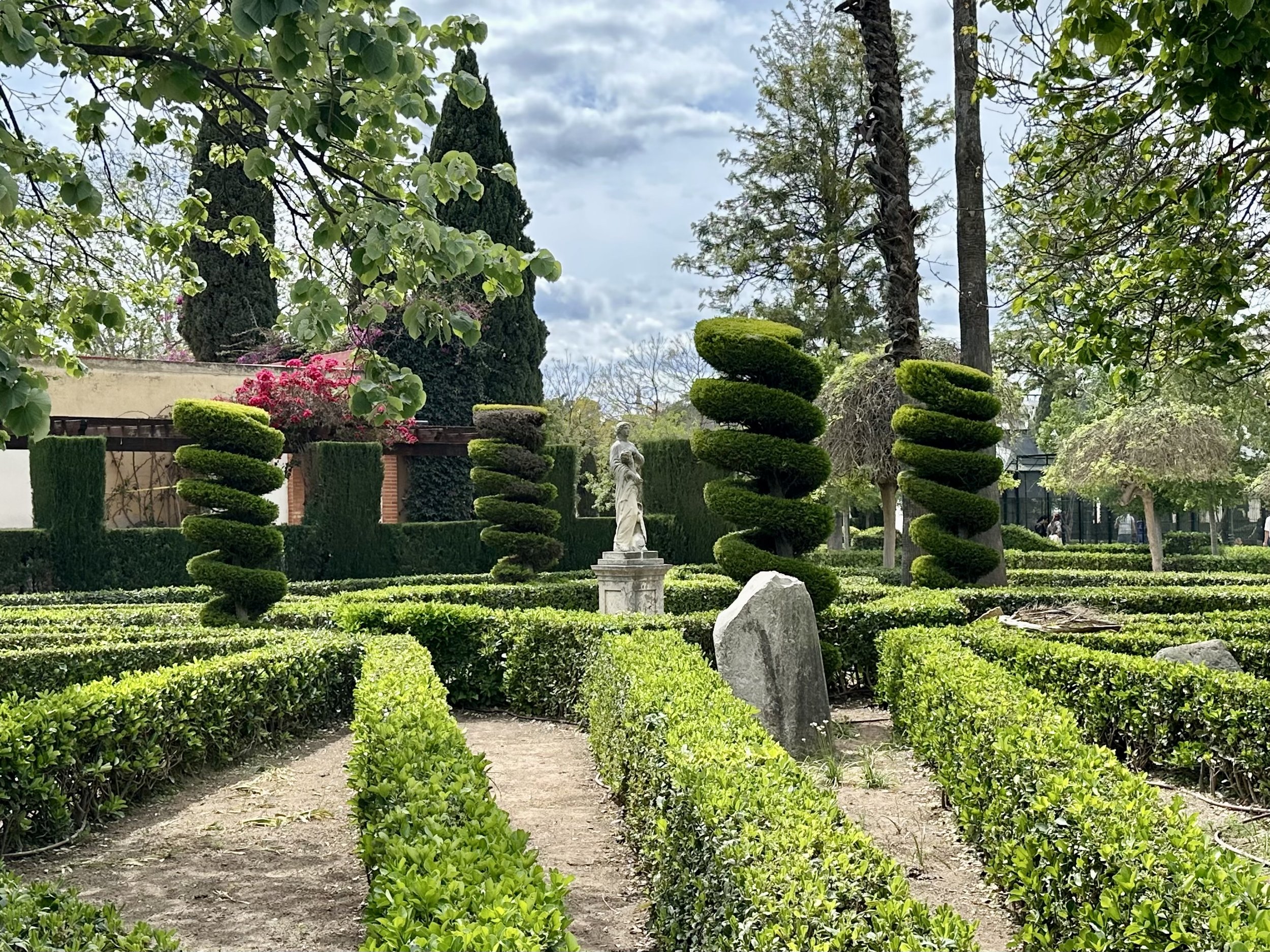
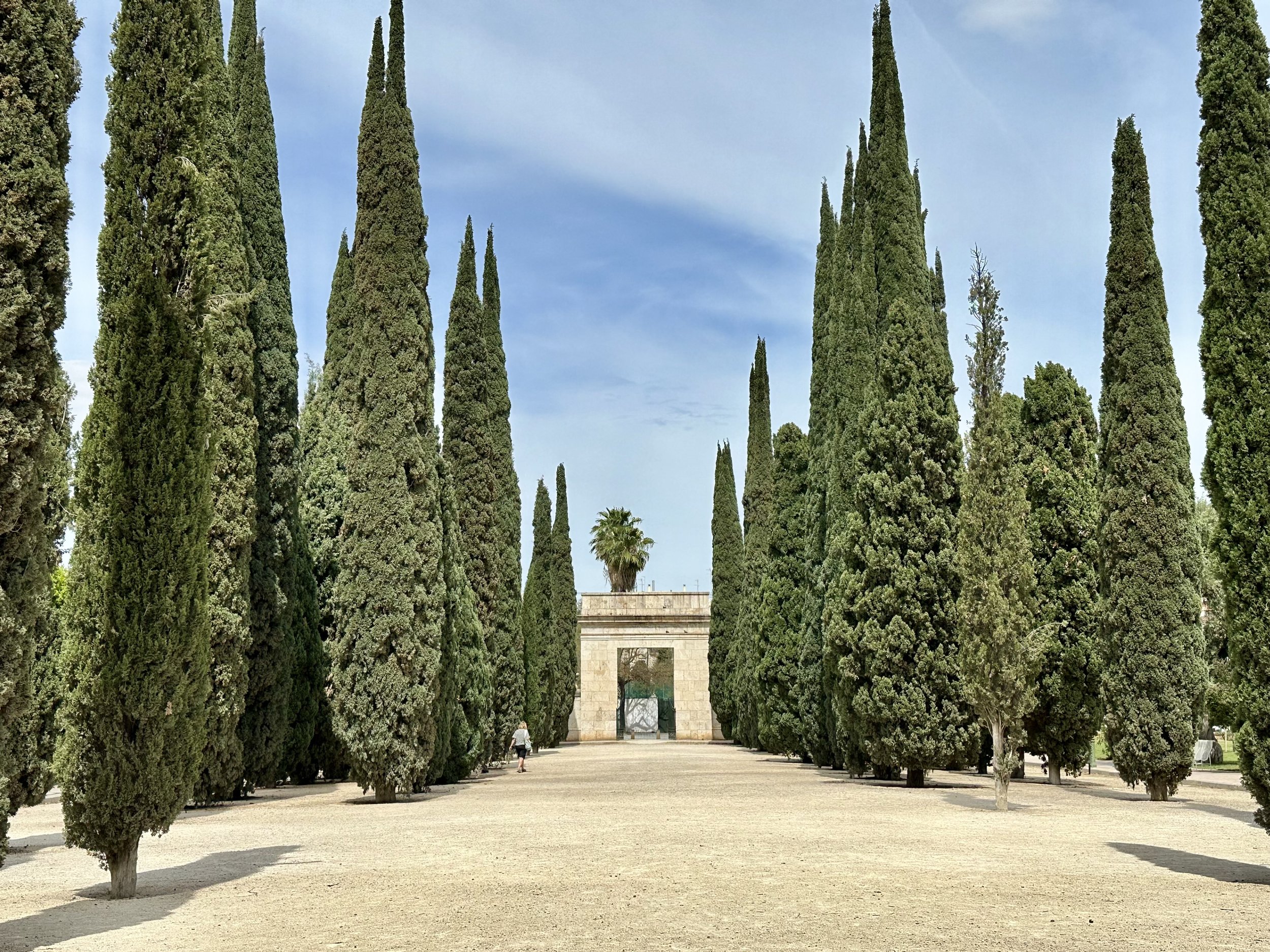
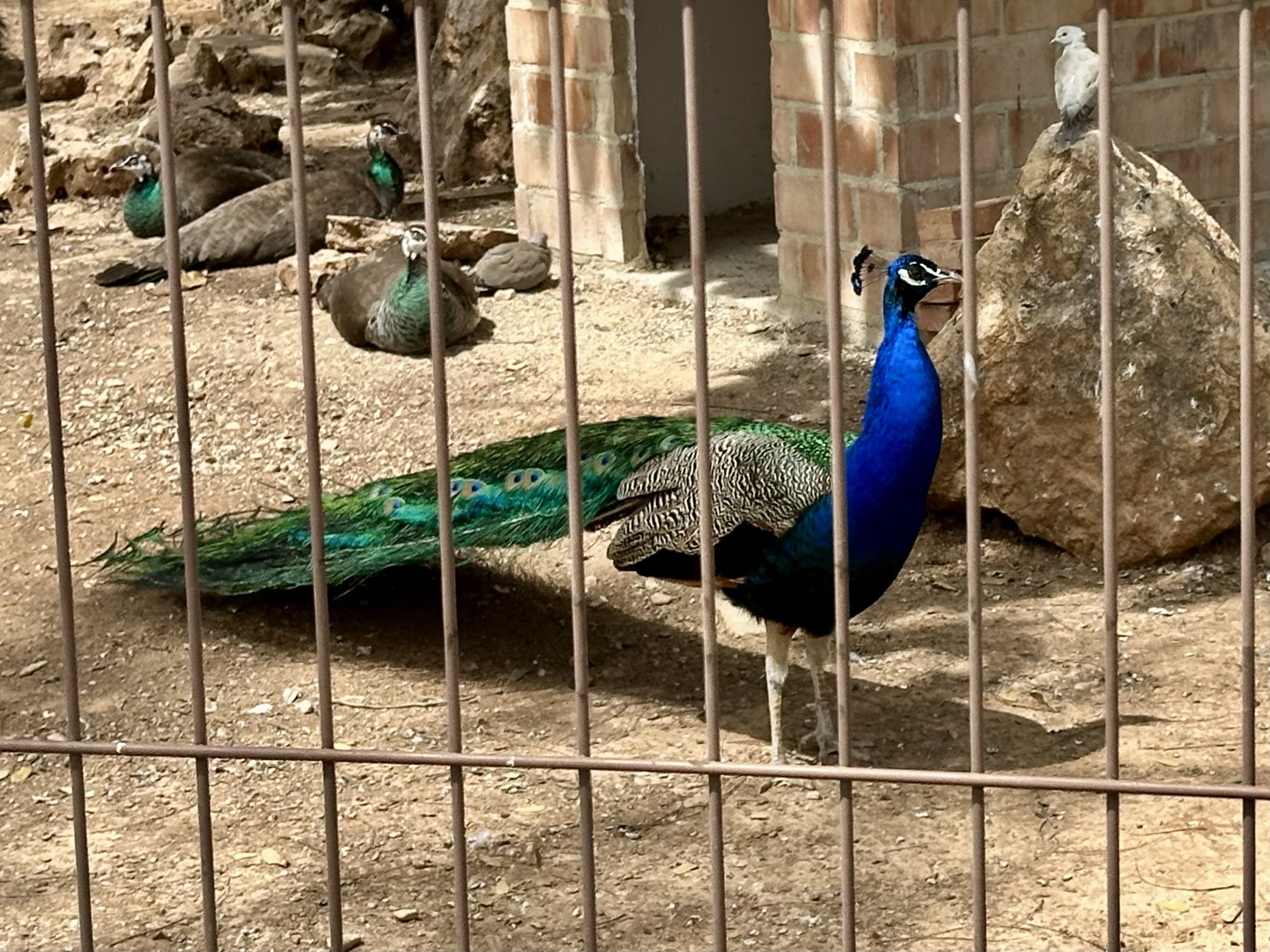
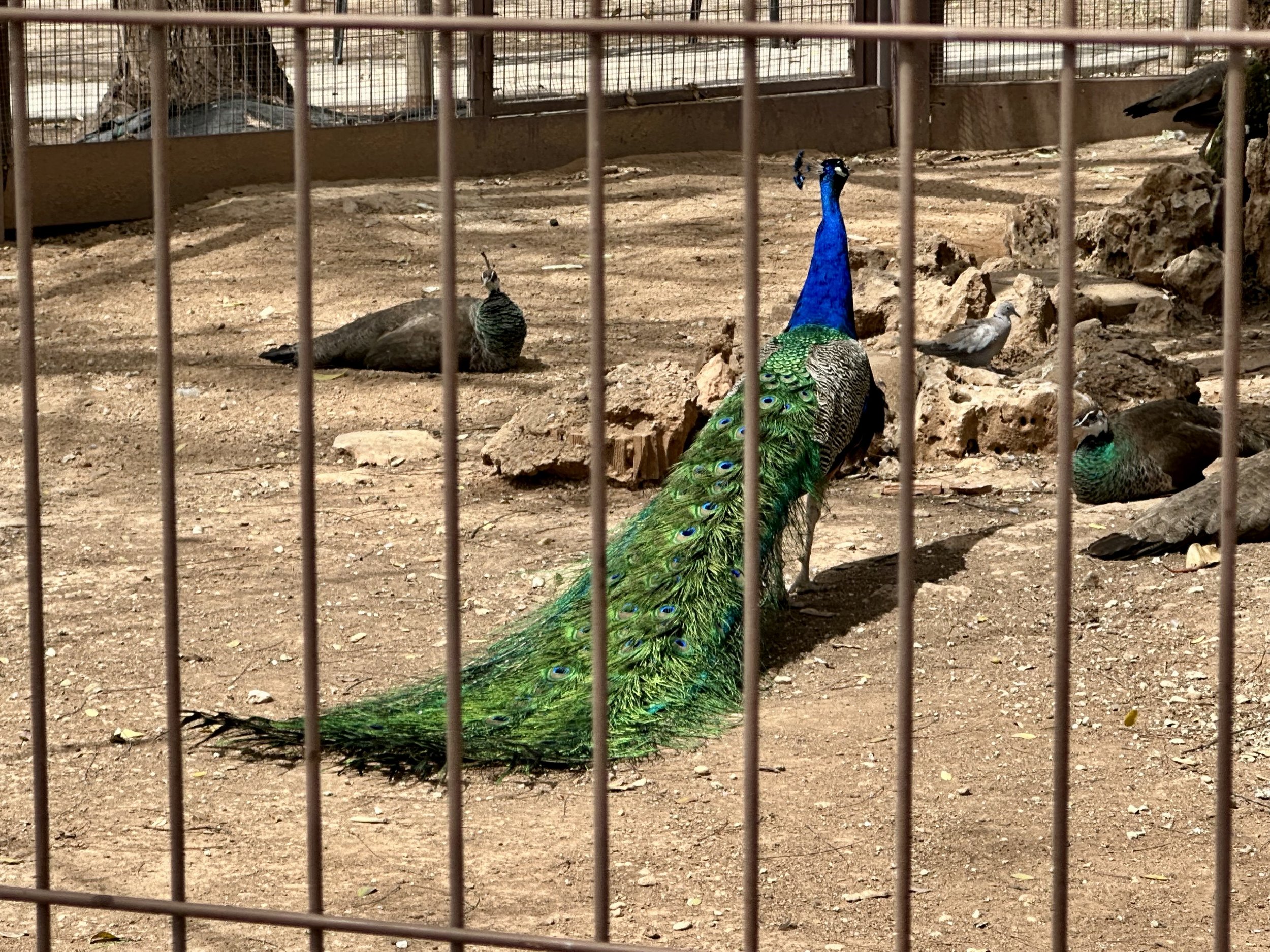
WEST: Going west in Turia Garden, we passed under more bridges and alongside a series of athletic fields. There was a puzzling concrete structure, abandoned and graffitied, pierced by a long metal footbridge. I later learned that this spot had once been a diversion dam on the Turia River. The building, Casa de Agua, was built in the 1980’s, and its purpose is still a mystery. At the western end of Turia Garden was Parque de Cabecera (Cabecera Park), with a round hill and a small lake with swan paddle boats. I liked the views, but the paths and dock were paved with half-rotted wooden boards in dire need of repair. In the distance was the graceful arch of a suspension bridge, which I later learned was part of BIOPARC Valencia. You can read about our visit to BIOPARC here.
